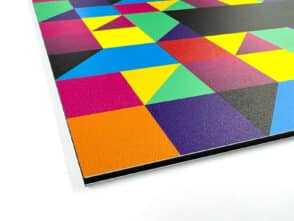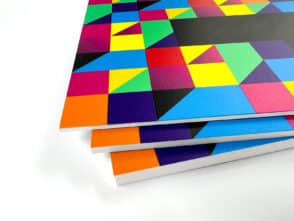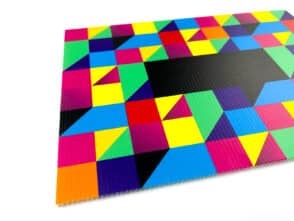Sign Board Printing Information
Board printing has become an essential service for a wide range of industries. From marketing materials to event signage, board printing provides durable, high-quality displays suitable for both indoor and outdoor use. Whether you need large-format posters or custom-shaped boards, modern printing techniques ensure vibrant colours and long-lasting durability.
One of the standout features of board printing is the customisation options available. Clients can choose from various materials such as Correx, Dibond, Foamex, and others, each offering different levels of thickness and finishes. For businesses seeking unique displays, services include cutting boards to custom shapes, laminations in matte or gloss, and additional features like drilled holes for easy mounting.
Printing resolutions have seen significant advancements, allowing for sharp, high-resolution prints that capture every detail of your artwork. Combined with UV-resistant inks, these printed boards can withstand the elements, making them perfect for both promotional and informational displays in any setting.
Key Takeaways
- Board printing offers durable and high-quality options for diverse uses.
- Customisation includes various materials, finishes, and shapes.
- Advanced printing techniques ensure vibrant, long-lasting prints.
Materials and Durability
When considering board printing, it’s important to understand the characteristics and benefits of different materials. This section covers various types of boards and optional finishes to help you choose the best options for your signage needs.
Foamex Boards
Foamex is a popular PVC-based material known for its durability and versatility. It comes in different thicknesses such as 3mm, 5mm, and 10mm. The material is strong, lightweight, and easy to cut, making it ideal for creating custom signs and displays.
Foamex boards are resistant to water and fading, especially when printed using UV stable inks. This makes them suitable for both indoor and outdoor use. Their smooth surface also makes them easy to print on, resulting in high-quality graphics. These boards are commonly used for exhibition panels, display pieces, and advertising posters.
Correx Boards
Correx boards are made from corrugated plastic and are another excellent option for temporary and cost-effective signage. This material is commonly used for estate agents’ “For Sale” signs, festival signage, and event wayfinding.
Correx is lightweight and easy to transport, making it practical for signs that need to be moved frequently. Though not as durable as other materials, it is suitable for short-term use, and its affordability is a significant advantage. The board’s corrugated structure provides decent strength but may not be ideal for long-term installations or areas with harsh weather conditions.
Dibond Boards
Dibond boards consist of two aluminium sheets with a solid polyethylene core. This combination results in a material that is extremely durable and resistant to bending. Dibond is perfect for outdoor signage due to its sturdy construction and ability to withstand various weather conditions.
The rigid nature of Dibond makes it suitable for permanent signage solutions such as shop signs, architectural signs, and information boards. It is also ideal for high-traffic areas where the signs might be subjected to physical impact. These boards offer excellent print quality, ensuring vibrant, long-lasting graphics that are both waterproof and fade-resistant.
Optional Lamination Finishes
Lamination can enhance the durability and appearance of printed boards. Gloss lamination provides a shiny finish that makes colours pop, adding a vibrant look to the graphics. This finish is excellent for catching attention in high-visibility areas.
Matt lamination, on the other hand, offers a non-reflective finish that is suitable for reading up close without glare. This type of finish gives a sophisticated look to the signage, making it ideal for upscale environments or professional settings.
Lamination also adds an extra layer of protection against scratches, spills, and weather conditions, extending the life of the printed boards. Whether you choose gloss or matt, lamination is a valuable option to maximise the durability and appearance of your signage.
Printing Techniques and Resolution
Printing techniques and resolution are essential for producing high-quality prints with vibrant colours. This section will focus on the importance of using the right colour profiles and ensuring optimal resolution for superior image quality.
Colour Profiles and CMYK
Colour profiles manage how colours appear on different devices. For printing, CMYK (Cyan, Magenta, Yellow, and Black) is the standard colour model. Unlike RGB (Red, Green, Blue), which is used for screens, CMYK ensures accurate colour reproduction in print.
When preparing images for print, it’s crucial to convert files to the CMYK profile. This step helps maintain colour fidelity, ensuring the printed output matches the digital design. For best results, use professional design software that supports colour management, like Adobe Photoshop or Illustrator.
Resolution and Image Quality
Resolution affects the sharpness and detail of printed images. Measured in DPI (dots per inch) or PPI (pixels per inch), higher resolution means better quality. 300 DPI is the industry standard for most print projects. This ensures images are clear and crisp without pixelation.
For text-heavy prints, a resolution of 400 DPI is recommended to enhance legibility. Always check the image file’s properties before printing to ensure it meets these resolution standards. Using high-resolution images from reliable sources, like professional stock photo sites, guarantees the best print quality.
Customisation Options
Board printing offers various customisation choices to fit unique needs. These options encompass sizing, thickness, cutting, and mounting, ensuring that each board serves its intended purpose effectively.
Sizing and Thickness
Users can choose from several standard sizes and thicknesses or opt for custom dimensions to meet specific requirements. For example, Foamex boards are available in 3mm, 5mm, and 10mm thicknesses, providing flexibility depending on the level of durability needed.
Sizes can range from small A3 boards to large A0 dimensions, catering for both small-scale and extensive displays. Custom sizes are also available, enabling perfect fitting for any space. Personalisation ensures the board works optimally in its intended setting.
Cutting and Mounting
Cutting options include custom shapes and precise measurements. Boards can be cut to shape, allowing for eye-catching and unique designs. They can also feature special cuts such as rounded corners to enhance aesthetics and safety.
Mounting options add versatility for display methods. Drilled holes can be included for easy hanging or mounting. Other options like adhesive backing or stand supports offer different ways to display the boards securely. These choices ensure the board is not only visually appealing but also functionally efficient.
Practical Applications
Board printing is widely used for various purposes. Key applications include indoor and outdoor signage, exhibitions and trade shows, and retail and business advertising.
Indoor and Outdoor Signage
Printed boards are essential for both indoor and outdoor signage. They offer a durable and cost-effective way to display information. Indoor signs are often used in lobbies, conference rooms, and hallways. They can include directories, company logos, and motivational posters. The material used for indoor boards is less likely to require weatherproofing, making it more economical and lightweight.
Outdoor signs need to withstand the elements, so they are typically made with more robust materials. These signs are found in places like storefronts, bus stations, and roadways. They can feature company names, promotional messages, or directional information. Weather resistance and visibility are key considerations for outdoor boards, ensuring they stay intact and readable over time.
Exhibitions and Trade Shows
Exhibitions and trade shows utilise printed boards to create eye-catching displays. These events often have limited setup and takedown times, so portable and lightweight printing materials are preferred. Customisation is crucial for tailoring each board to specific branding or messaging needs. Companies use these boards to showcase products, highlight features, and provide contact information.
Double-sided printing and pop-up designs are common to maximise space and impact. Interactive elements, like QR codes, can be integrated to engage visitors further. Ease of transport and quick assembly are significant benefits, allowing exhibitors to focus more on interaction and less on logistics.
Retail and Business Advertising
In retail, printed boards are vital for advertising and branding. They are used in storefronts to attract customers and inside stores to promote sales and special offers. Point-of-sale displays and promotional stands often employ eye-catching board prints to draw attention to featured products.
For businesses, these boards are tools for brand building and communicating key messages. In offices, they are used for announcements, motivational quotes, and directional signage. Materials need to be versatile to allow for frequent updates and changes. High-quality printing ensures that the visuals always look professional and inviting.
Board printing thus serves diverse purposes, from guiding customers to enhancing brand presence at events and in retail spaces.
Care and Maintenance
Proper care and maintenance of board printing equipment are essential to ensure durability and maintain print quality. This involves regular cleaning, safe storage, and protecting the machine from adverse elements.
Cleaning and Storage
Regular cleaning of the equipment is crucial. Dust can accumulate on components and affect performance. Use a soft brush or compressed air to remove dust and debris. Gently wipe down surfaces with a slightly damp, lint-free cloth.
Pay attention to the print head and other key parts as these can get clogged with dust. Keeping these areas clean ensures smooth operation and better print quality. Store the printer in a clean, dry area to avoid moisture and dust accumulation.
Proper storage also involves ensuring the machine is turned off and unplugged when not in use. Covering the printer with a dust cover when it is not in use can also be beneficial. Ensure all cables are securely stored to prevent damage.
Protection from Elements
Board printers are sensitive to environmental factors. Water and sand are particularly damaging. Avoid using the printer in areas where it might get wet or where sand is prevalent.
If the printer must be transported, use a sturdy, weather-proof case. This protects it from bumps, moisture, and other potential hazards during transport. Weatherproofing is also important—keep the printer indoors during harsh weather conditions to prevent damage.
Cost and Accessibility
When considering board printing, both cost and accessibility are crucial factors. Understanding the price points and the ordering process can help in making informed decisions.
Affordability and Value
Board printing can vary in cost depending on the size and material. For instance, a panel in size A0 might cost around £250, while smaller sizes like A4 might be priced at £85. Such options provide cost-effective solutions for various budgets.
Custom sizes and features like high-resolution full-colour printing and UV-resistant inks ensure value for money. Additionally, affordable options like foam boards, which are weatherproof and long-lasting, make it easy to find a solution that fits both needs and budget.
Ordering Process
The ordering process for board printing is designed to be straightforward. Customers can often start by emailing their designs or artwork to Banner World. Some companies also offer to print and frame the artwork on request.
Choosing the right accessories and mounting options, such as easels or wall mounts, can also be part of the ordering process. Banner World provide custom sizes and lamination finishes, allowing for a seamless and personalised experience.














